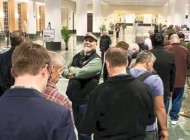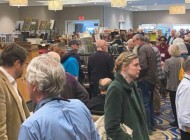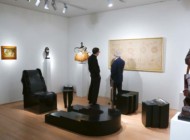Click Here To See The Full Preview Of This Year’s Show!
In our fast-moving world, it’s easy to overlook the physical objects that surround us. Yet the items we handle, admire or inherit — especially antiques — carry deep stories and emotional energy. To truly understand them, we need to look beyond surface appearances. When we pause to observe, study and connect with material culture, we open a doorway to history and rediscover our shared human experience.
Looking at an object deeply begins with attention. We often see things without truly observing them. To look at an object with intention means to study its shape, texture, material, wear and even the way light interacts with it. Is the item mass-produced or handmade? Does it show signs of use? Is there any repair work, fading, or patina that reveals its age? Observation allows us to move past the aesthetic and into a story waiting to be told.
This practice is especially rich when applied to antiques. A handmade chair, a worn leather-bound book or a daguerreotype invites us to ask questions. Who used this? What were their lives like? What social or historical forces shaped this object’s design? In asking, we begin to move toward understanding.
Understanding an object involves placing it in context. This requires knowledge of its origin — its time period, culture and function. For example, a simple ceramic bowl could be a common household item, or a ceremonial piece used in rituals. Understanding comes through research, comparison and even dialogue with others who might know more. Museums and cultural institutions practice this through “material culture studies,” which examine objects not just as things, but as bearers of meaning.
Objects can represent not just practicality but power, identity and aspiration. A China trade plate, for instance, is more than porcelain — it represents colonial trade, social class and gender roles. The more we learn, the more layered and alive the object becomes in our imagination.
Antiques, more than newer objects, often seem to carry a certain presence. This is partly psychological — our knowledge of their age and history charges them with meaning — but it’s also emotional. Antiques are touchstones of memory. A dresser that belonged to a grandparent may bring feelings of warmth and loss. A centuries-old quilt may radiate the care of its maker. This energy is amplified when we allow ourselves to connect emotionally. Holding or being near antiques is sometimes like touching fragments of other lives. Their worn surfaces, the craftsmanship, the materials aged by time — all evoke feelings of continuity, of having stepped into a longer human narrative.
In a time of constant change, antiques remind us of where we came from. They are physical records of human life — of what people valued, how they lived and what they made with their hands. In preserving and living among antiques, we are reminded that we are not the first to live, to struggle, to celebrate or to hope.
This grounding is not merely nostalgic. It is stabilizing. It allows us to feel connected to something larger than ourselves. A centuries-old object in your hand whispers, “You are part of a greater story.” This sense of rootedness is especially powerful in times of upheaval, when the past feels like a guidepost for the future.
Material culture — our objects, buildings, tools and art — provides a rich, tangible record of history. While written records tell us what happened, material culture shows us how people lived. Objects of everyday use, a child’s toy or an elegant mirror, may reveal more about daily life than a history book ever could.
Through studying material culture, we gain a human view of history. We see not just events but lived experience. And in this, we find empathy — because in understanding the lives of others, we begin to understand our own.
When you join us for Antiques in Manchester this August, take some time to really look at things and ask questions. Find a way to feel a bit more grounded in these ever-changing times. I look forward to greeting you and would love to hear your thoughts on what you have seen.
See you soon,
Karen DiSaia




